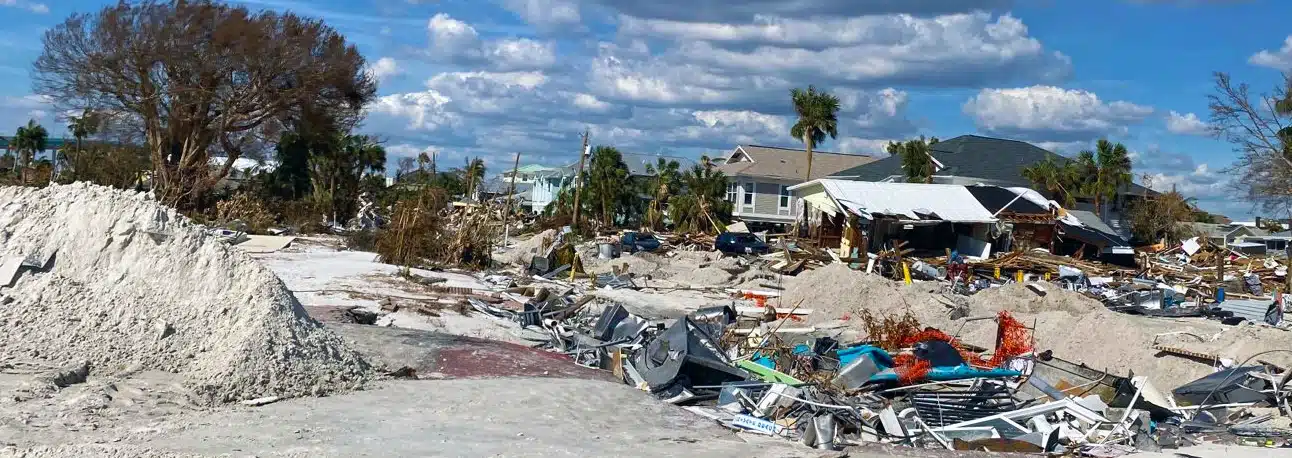Natural disasters have long wreaked havoc on communities worldwide, devastating lives, homes, and infrastructure. The financial burden of recovery is substantial—and it’s only set to grow as global inflation continues to rise.
To understand the financial scale of future natural disasters, global leader in satellite communications ST Engineering iDirect has analyzed some of the world’s most financially damaging natural disasters, adjusting the costs using the US Consumer Price Index (CPI) and forecasting future costs based on an average annual inflation rate of 3.5%.
The research reveals that the future costs of rebuilding after major natural disasters could reach unprecedented levels by 2050, further straining economies and communities across the globe.
Among the findings:
- The 2011 Tōhoku Earthquake and Tsunami in Japan, which caused catastrophic damage to homes and infrastructure, including the Fukushima nuclear disaster, cost $220 billion at the time. If a disaster of that scale were to happen today, that figure stands at $292 billion, and by 2050, it’s estimated to soar to $714 billion.
- Hurricane Katrina in 2005, which devastated the Gulf Coast of the United States, originally cost $125 billion to repair and clean up. Adjusted for inflation, the current cost of a hurricane wrecking similar havoc is $201 billion, with a future cost projection of $491 billion by 2050.
- The 2008 Sichuan Earthquake in China, which left entire towns flattened and continues to impact the region, originally cost $150 billion. Today’s figure for an earthquake on that scale is $219 billion, and by 2050, it is projected to rise to $535 billion.
- The 2019 Australian Bushfires scorched over 24.3 million hectares of land. With global temperatures continuing to rise at an alarming rate, it’s likely that we’ll see wildfires become more common in the future. The fires cost $80 billion in 2019, which would rise to $98 billion today. By 2050, a wildfire the same size would cost the economy over $240 billion dollars.
- While wildfires are becoming more common is some parts of the world, other areas are seeing more intense and frequent rainfall. The 2020 South Asian Floods washed away thousands of homes and businesses, displacing almost 18 million people across India, Bangladesh, Nepal, Pakistan and Sri Lanka. The collective cost in 2020 was $105 billion dollars. If the same disaster happens in 2050, it’ll cost in excess of $310 billion dollars.
Commenting on the findings, Darren Ludington, Regional Vice President of Americas at ST Engineering iDirect, said: “As infrastructure becomes more expensive to maintain, and crucially, insure, the financial costs of natural disasters are set to rise to staggering highs. Costs for homeowners and governments are already at record levels, and the financial burden on relief and recovery is only set to increase.
“A big part of the initial cost of a disaster is in the immediate relief efforts. Without effective communication, communities can remain cut off from first responders, and help can be slowed down by ineffective coordination. Here, satellite communications can provide a critical lifeline.
“It’s essential that these systems are integrated into disaster preparedness plans ahead of time. They can prove to be a cost-effective option when a disaster does strike, and can ultimately save lives.”
Are we prepared for the next major disaster?
As the frequency and intensity of natural disasters increase due to climate change and other factors, it isn’t a question of if, but when the next major natural disaster will strike.
To find out more about how satellite communications can help aid disaster relief efforts, read about our participation in the recent Central States Communications Exercise and INTEROP events or visit our Government and Defense page.
Methodology
Using an Inflation Calculator that accounts for CPI data, ST Engineering iDirect examined how much natural disasters cost when they happened vs how much they would cost today.
To calculate the future cost of similar disasters in 2050, an assumed average global inflation rate of 3.5% was used to work out how much disasters would cost from today’s figures.
